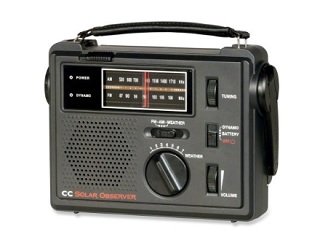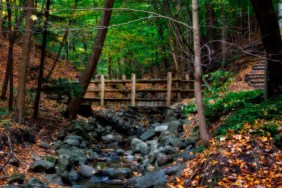 As you saw in Part One of this series, there are more than a few mistakes that beginner backpackers make when they hit the trail. It’s good to take a closer look at why such errors are mistakes, though, so that you understand their ramifications and hopefully refrain from committing them yourself in the future. Sometimes, you have to figure out what not to do in order to fine-tune your practices down to what you need to do, and today, we’ll explore a few more common rookie mistakes to help you do just that.
As you saw in Part One of this series, there are more than a few mistakes that beginner backpackers make when they hit the trail. It’s good to take a closer look at why such errors are mistakes, though, so that you understand their ramifications and hopefully refrain from committing them yourself in the future. Sometimes, you have to figure out what not to do in order to fine-tune your practices down to what you need to do, and today, we’ll explore a few more common rookie mistakes to help you do just that.
I know it’s tempting to tie on your brand new pair of boots and hit your favorite trail but boots need time to be broken in properly and neglecting this essential step before wearing them on a serious hike will lead to misery. For example, a pair of unbroken leather boots will tear your feet apart, leaving you limping for weeks after your trip. Starting weeks ahead of time, you need to break them in by wearing them around the yard, light walks at your local park, or even running errands around town. Trail shoes, which perform more like athletic footwear, conform quickly to your feet, while taller, rigid boots require more break-in time. If your feet start to hurt or develop hotspots and blisters, apply bandages, experiment with different socks, and keep at it.
Who doesn’t check the weather forecast before engaging in any outdoor activity? You’d be surprised at just how many people commit this error. While a little rain won’t hurt you, even the best equipment can’t provide complete protection from the wake of nasty weather. Before every trip, be sure to review weather sites, such as weather.com, weatherbug.com, or noaa.gov. Start checking the forecast for your trip’s area weeks in advance and pack a weather radio for the trip so you can stay updated. If by chance you can’t escape severe weather, like a heavy storm, make preparations before it hits, like choosing a secure campsite, tightening your stakes and guy-lines, keeping away from potential high or runoff water locations, and staying clear of loose or low branches.
I like to consider myself a punctual individual. I actually hate being late, for a number of reasons, but when it comes to trailhead times, being late can spell disaster. When you’re hiking, it’s best to start on time, and if you can’t, shorten your route. Other than an early start, your hiking speed will play a role, as well. An average adult hikes at a speed around 3mph, but that rate drops when you factor in rough terrain, elevation changes, and breaks. Also, keep in mind that groups always move slower than individuals, since you can’t really move faster than the slowest person in your group. If you find yourself starting later than anticipated, check your map for shorter routes or trail off-shoots that may reach your destination before sunset. However, if you do begin to fall behind schedule, try to avoid leaving the trail cut through the brush, as appealing as this may seem. Instead, just keep moving, watch your time, and be prepared to finish using headlamps, which you hopefully packed because you’re a well-prepared backpacker, right?
I’m sure there are dozens of other mistakes committed by new backpackers, but the list outlined in this series is comprised of some of the more popular ones I’ve seen or head of throughout the years. As I’ve said, we’ve all been there, and I’m not ashamed to admit it. Hopefully, the series has opened your eyes to the importance of avoiding these blunders during your own backpacking experiences.








